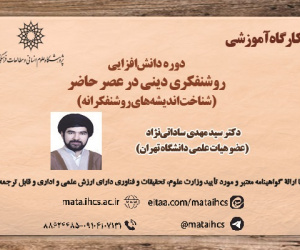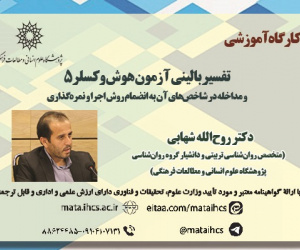نسخه شناسی مصاحف قرآنی (21): قرآن 3610 در موزه ملی ایران، کتابت ابومحمد جعفر بن علی الوراق در 416 قمری به خط کوفی مشرقی
آرشیو
چکیده
نسخه قرآنی به شماره 3610 در موزه ملی ایران یکی از قدیم ترین قرآن های تاریخ دار، به خط کوفی مشرقی یا کوفی ایرانی است که به احتمال قوی در منطقه خراسان کتابت شده است. مطابق اطلاعات مذکور در انجامه نسخه، تاریخ کتابت آن ماهِ ربیع الآخر سال 416 هجری، کاتب آن ابومحمد جعفر بن علی الورّاق، مُذهِّبش ابونصر منصور المُذهِّب، و اِعراب گذار نسخه محمّد بن ابی زکریا است که نسخه را بر اساس دو قرائتِ ابوعمرو بصری و کِسائی کوفی اعراب گذاری کرده است. 149 برگ باقی مانده از این نسخه که تقریباً مشتمل بر 28 جزء قرآن است، یکی از اسناد مهم برای بررسی جوانب مختلف قرآن نویسی از حیث متن، املاء، قرائات، خط کوفی، و تذهیب در آغاز سده پنجم هجری در خراسان به شمار می آید.Codicology of Qurʾānic Manuscripts (21) MS 3610 in the National Museum of Iran: A Qurʾān in Eastern Kufic from Khorasan, copied by Abū Muḥammad Jaʿfar b. Alī al-Warrāq in 416 AH/ 1025 AD
MS 3610 in the National Museum of Iran is one of the oldest extant dated Qurʾānic manuscripts, written in Eastern or Iranian Kufic script. It is strongly believed to have been written in the Khorasan region. The colophon indicates it was transcribed in Rabīʿ al-Ākhir, 416/ June 1025, by the scribe Abū Muhammad Jaʿfar b. Alī al-Warrāq. Abū Naṣr Manṣūr al-Mudhahhib was the illuminator, and the diacritical marks were applied by Muḥammad b. Abī Zakariyā according to the readings of Abū ʿAmr al-Basrī and al-Kisāʾī al-Kūfī. The 149 folios remaining of this manuscript, comprising approximately 28 parts (juzʾ) of the Qurʾān, offer valuable insights into early 5th/ 12th century Qurʾānic scribal practices in Khorasan, including textual variations, orthography, reading variants, Kufic script, and illumination.







